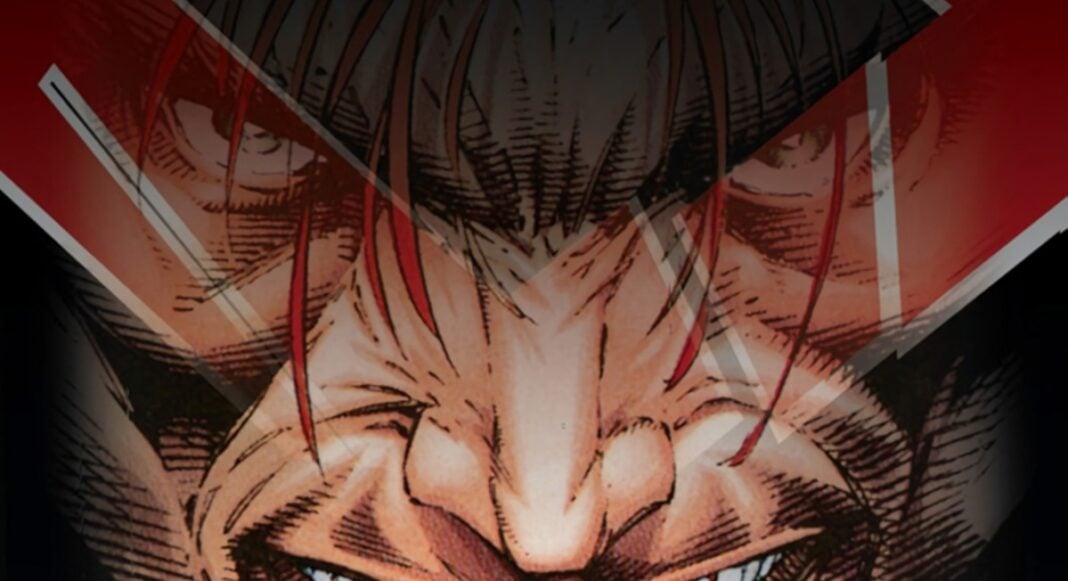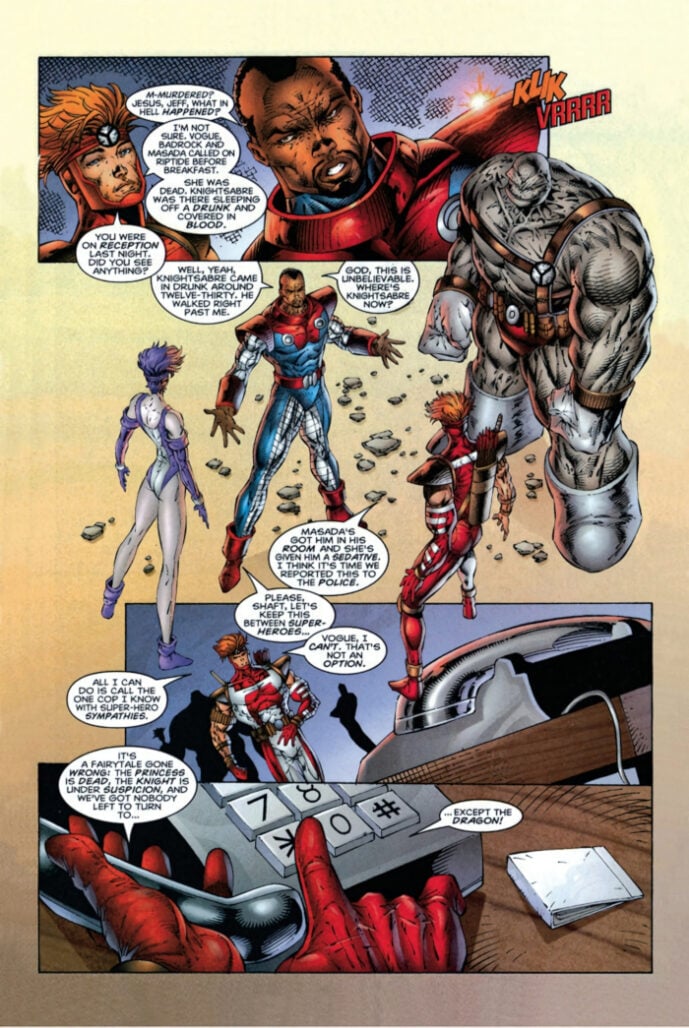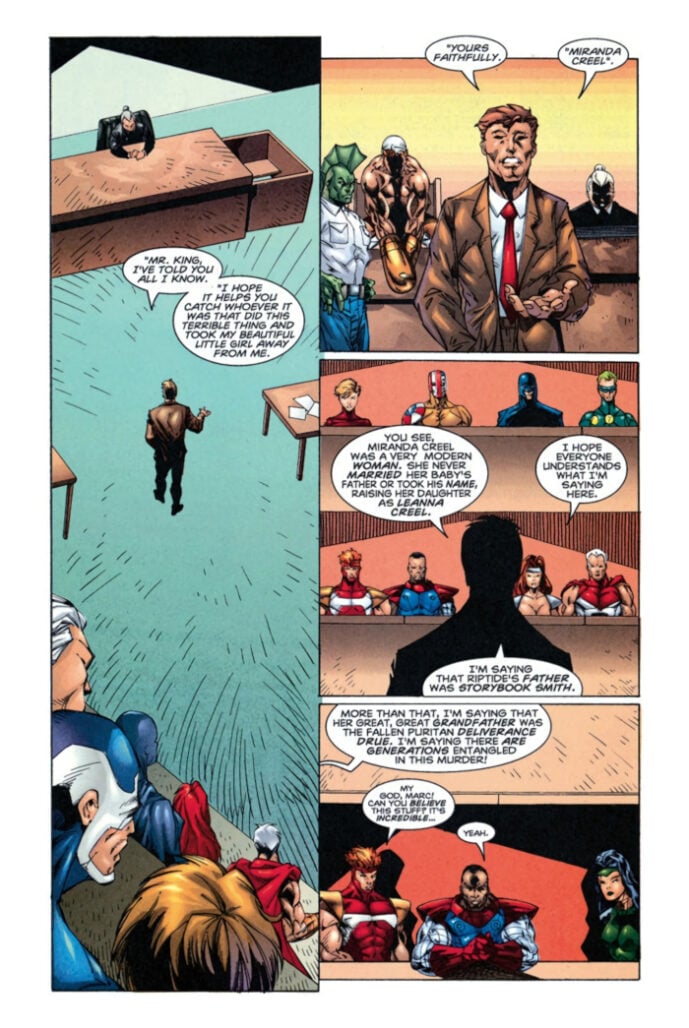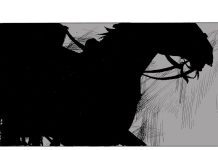Alan Moore‘s contribution to comics in the ’90s could well be considered a bit weird. Sure, there’s work on his seminal From Hell with Eddie Campbell and the madcap time spent playing with Todd McFarlane’s universe in Violator and various Spawn comics, but there were dabbles in other areas from other Image partners, Jim Lee, Rob Liefeld, and even a bit for Jim Valentino. Along with his own 1963 with Stephen Bissette, John Totleben, Rick Veitch, and Dave Gibbons among others.
You probably have preconceived notions about Moore working for Image. Ones likely derived from the stereotype of those early Image books. But when you read them, it feels like Moore was having fun. His Spawn material is over-the-top hilarious. His WildC.A.T.s feels like the closest he ever come to writing the X-Men proper (outside of Captain Britain with Alan Davis and that charity fundraising one-shot). And his work with Liefeld’s corner of Image (or as his own publishing company, Awesome Entertainment). Man. Supreme. Feels like a lost masterpiece these days.
But Supreme wasn’t the only thing Moore was working on for and with Liefeld. His aims were much, much higher.
“The dark gets darker.”
Judgment Day by Moore, Liefeld, Jon Sibal, an army of colourists, Richard Starkings & Comicraft, and a veritable who’s who of other artists for the flashbacks, testimonies, and more (please see below for the names of all of the esteemed artists) set out to redefine the Awesomeverse. With a murder mystery.
If your immediate thought from that is parallels to Watchmen, that’s fair. Though this is a very different beast. It’s not a grim, gritty tale on how applying realistic events to superheroes is a ridiculous proposition, it’s a grim, gritty tale on how applying realistic events to superheroes is a ridiculous proposition. … Wait. It gets pretty meta. In some ways it’s Moore chiding himself for bringing about the grim and gritty Dark Age of Comics. In others, it’s a freewheeling tour through comics history, starting at the pulp era through to modern day. Using the Youngblood characters as a core. And presenting a hopeful beyond.
It’s pretty ambitious for a comic with a main narrative pencilled by Rob Liefeld, but it works. And I think if were anyone other than Liefeld, other than probably just his corner of Image characters, it wouldn’t have worked nearly as well. It’s not a deconstruction of superheroes, or even grim superheroes though there’s a few jabs there, it’s a reconstruction of the love, joy, and wonder of superheroes. In just three issues of a comic many people likely don’t even know exists.
“Even legends die, son. Listen, I want you to take this and get it out of here.”
Judgment Day by Moore, Liefeld, Sibal, Starkings & Comicraft, and a whole slew of other creators was meant as a shake-up for Liefeld’s characters, a re-framing of many of them, and a blueprint for what was to come next. Similar in form and fashion to what Moore, Chris Sprouse, and their collaborators had done earlier in Supreme. There was even an Aftermath issue where Moore and Gil Kane set out teasers for a few of the properties that Moore was possibly going to do next. Including Youngblood, Glory, The Allies, Maximage, and more.
Sadly, Awesome Entertainment went bankrupt. Two (and a bit) issues of Youngblood from Moore and Skroce were published, but that was pretty much it. Moore’s scripts for Glory eventually surfaced at Avatar with art by Marat Mychaels, but that stalled out at the second issue (not really sure why, I’ve seen conflicting reports). Some similar ideas and approaches did manifest in the form of America’s Best Comics, but it would have been interesting to see all of the original ideas with the original characters.
And it’s a shame that this era could almost be considered lost media at this point. The publishing rights were picked up by Checker Book Publishing and a collection (minus the prelude issue for some reason) was released in 2003. But their collections leave a bit to be desired. The print copies aren’t terrible, but the digital releases weren’t great (you’ll see in the art in this article—it’s one of the instances where letterers who tell you to do simple All Caps for text are right when it comes to legibility) and were pulled from Amazon a while ago due to quality issues. I think some of it was due to never actually having source files to print from, but I’m not sure if that applied to all of their releases or just certain bits of the Hellraiser books they did.
Classic Comic Compendium: JUDGEMENT DAY
Judgment Day
Writer: Alan Moore
Pencillers: Rob Liefeld, Gil Kane, Stephen Platt, Keith Giffen, Adam Pollina, Dan Jurgens, Chris Sprouse, Steve Skroce, Jim Starlin, Terry Dodson, Marat Mychaels, Cedric Nocon, Jeff Johnson, Rick Veitch, Ian Churchill
Inkers: Jon Sibal, Gil Kane, Joe Weems V, Bill Wray, Al Gordon, Larry Stucker, Alan Weiss, Rachel Dodson, Norm Rapmund, Dan Panosian, Rick Veitch, Marlo Alquiza
Colourists: Tanya Horie, Donald Skinner, Andy Troy, Brett Evans, Jimmy Yu, Ron Rife, Richard Horie, IHOC & Quantum FX Color
Letterers: Richard Starkings & Comicraft
Publisher: Awesome Entertainment (original issues) | Checker Book Publishing (collection)
Release Date: June 1997 – March 1998 (original issues) | November 2003 (collection)
Read past entries in the Classic Comic Compendium!
Check out other recent review pieces from The Beat!















https://www.kobo.com/ca/en/ebook/supreme-story-of-the-year
https://www.kobo.com/ca/en/ebook/supreme-the-return
https://www.kobo.com/ca/en/ebook/judgment-day-3
The Checker Books collections of Alan Moore’s JUDGMENT DAY and SUPREME are still available digitally legally on Kobo.com
Not the greatest quality, but also not totally “lost media”.
When the only extant “new” copies available aren’t greatly legible (the Kobo edition is likely the same that I have from Amazon before they pulled it from sale – such that things like the opening narration boxes and Badrock’s dialogue really aren’t readable), it’s hard to recommend that people do anything other than try to track down the original issues if they can. It’s sad that quality reprints of the era aren’t readily available. (I’m also not sure if Moore & Skroce’s Youngblood was ever available through Devil’s Due Digital at all.)
Comments are closed.